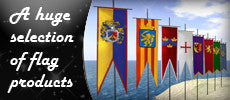
Pure 100 percent copper magnetic bracelets. Item # JL529
Fact of the health benefits of copper.
Copper plays many important roles in maintaining a healthy body and some of its benefits include:
Arthritis:
The health benefits of copper relate to its anti-inflammatory actions that assist in reducing the symptoms of arthritis. The consumer market is also flooded with copper bracelets as well as other accessories for curing this condition. Copper can also work as a home remedy for arthritis; store water in a copper container overnight to accumulates copper traces. These are beneficial in strengthening the muscular system, so drink the water when you wake in the morning. You will feel energized and active for the day, because your metabolism will have a good source of copper for its daily processes.
Proper Growth:
Copper is essential for normal growth and health. Thus, it is very important to include this mineral in balanced levels in your regular diets. It is also helpful in the protection of the skeletal, nervous and cardiovascular systems. If you suffer from a copper deficiency, the normal and healthy growth of organs and tissues, as well as their proper oxygenation from an ample red blood cell concentration, would be impossible. Copper deficiencies are seen in many third world countries, and is reflected in the number of birth and growth defects in children of those nations.
Pigmentation of Hair and Eyes
: Copper is a vital component of the natural dark pigment, melanin, which imparts coloration to the skin, hair, and eyes. Melanin can be produced by melanocytes only in the presence of the cuproenzyme called tyrosinase, which is derived from copper. Intake of copper supplements also helps in protecting against graying of the hair, so while it is often overlooked as an antioxidant mineral, it does protect the integrity of those cells and keeps you looking young! It also maintains the color of your eyes, and is essential, along with zinc, to keep your eyes beautifully colored into your old age.
Beef3Connective Tissues: Copper is an important nutrient that plays a significant role in the synthesis of hemoglobin, myelin, body pigment melanin and collagen. It helps to protect the myelin sheath surrounding the nerves, and it is also actively involved in the production of elastin, an element of connective tissue that keeps the skin flexible. This also keeps your skin from looking older, by keeping it flexible and less prone to sagging and wrinkles.
Brain Stimulation:
Copper is widely known as a brain stimulant, which is why food with a high copper content is often classified as “Brain Food”. However, copper content in the diet has to be in correct proportions, because too much copper is also not healthy for the brain. Copper has a control function to play in the brain, so the amount of copper supplementation has to be balanced. Copper has been associated directly with higher thought processes, particularly in relation to the impact of its transporter protein, Atp7a. Studies have shown a direct link between copper content within the brain and creative or out of the box thinking, showing that copper enables neural pathways to develop in unique ways.
Enzymatic Reactions:
Copper is either an element or a cofactor in as many as 50 different enzymes that take part in various biological reactions within the body. These enzymes can function properly only in the presence of copper. Without the enzymatic reactions in our various organ systems, our entire metabolism would slow down and the intricate network of reactions and metabolic pathways would cease to function in harmony. This is specifically important in certain brain pathways, particularly those involving dopamine and galactose.
Utilization of Iron and Sugar:
Copper helps in the absorption of iron from the intestinal tract and in the release from its primary storage sites like the liver. It also helps in the utilization of sugar in the body. By helping in the absorption of iron from food and other supplemental sources, copper guarantees a healthy red blood cell count and proper oxygenation of different organ systems. Without a proper supply of iron, people suffer from anemia, also known as iron deficiency, which can be a very dangerous condition resulting in fatigue, muscle ache, digestive problems, and general weakness.
copperinfographic
Helps Prevent Premature Aging: Copper is a strong antioxidant, which works in the presence of the antioxidant enzyme superoxide dismutase to safeguard the cell membranes from free radicals. Superoxide dismutase is one of the strongest antioxidants that work within the body in the fight against free radicals. Free radicals attack many different organ systems, but are specifically well-studied in terms of their effect on aging, including wrinkles, age spots, susceptibility to various types of cancer, macular degeneration, and kidney malfunctions. Having enough copper in your daily diet can keep you looking younger for longer!
Increases Energy Production:
Copper is essential for the synthesis of adenosine triphosphate, which is an energy storehouse of the human body. The cuproenzyme, cytochrome c oxidase, affects intracellular energy production. It acts as a catalyst in the reduction of molecular oxygen to water, during which the enzyme produces an electrical gradient used by the mitochondria to synthesize the vital energy-storing molecule, ATP. Therefore, when we have enough copper in our bodies, we will have enough functional and accessible energy to get through the day without feeling lethargic or tired.
Some benefits of magnets.
People wear magnets to treat painful conditions including general pain, pain after surgery, low back pain, foot pain, heel pain, osteoarthritis, rheumatoid arthritis, fibromyalgia, chronic fatigue syndrome (CFS), carpel tunnel syndrome, painful menstrual periods, nerve pain caused by diabetes (diabetic neuropathy), sports injuries, and migraineheadache.
Magnets are also worn for treating water retention, wounds, male sexual performance problems (erectile dysfunction, ED), trouble sleeping (insomnia), ringing in the ears (tinnitus), cancer, multiple sclerosis (MS), Parkinson’s disease, schizophrenia, obsessive-compulsive disorder (OCD), post-traumatic stress disorder (PTSD), epilepsy, trouble controlling urination (incontinence), and many other conditions
We have great wholesale pricing on our copper magnetic bracelets.
They come in assorted designs.
Don't forget to sign up for our mailing list, to receive coupons and discounts.






 FL179
FL179 
 FL # 330
FL # 330 SUN156
SUN156 JL226 ROUND MARDI GRAS BEAD NECKLACES
JL226 ROUND MARDI GRAS BEAD NECKLACES TDT211 TIE DYE MARDI GRAS TEE SHIRTS
TDT211 TIE DYE MARDI GRAS TEE SHIRTS









